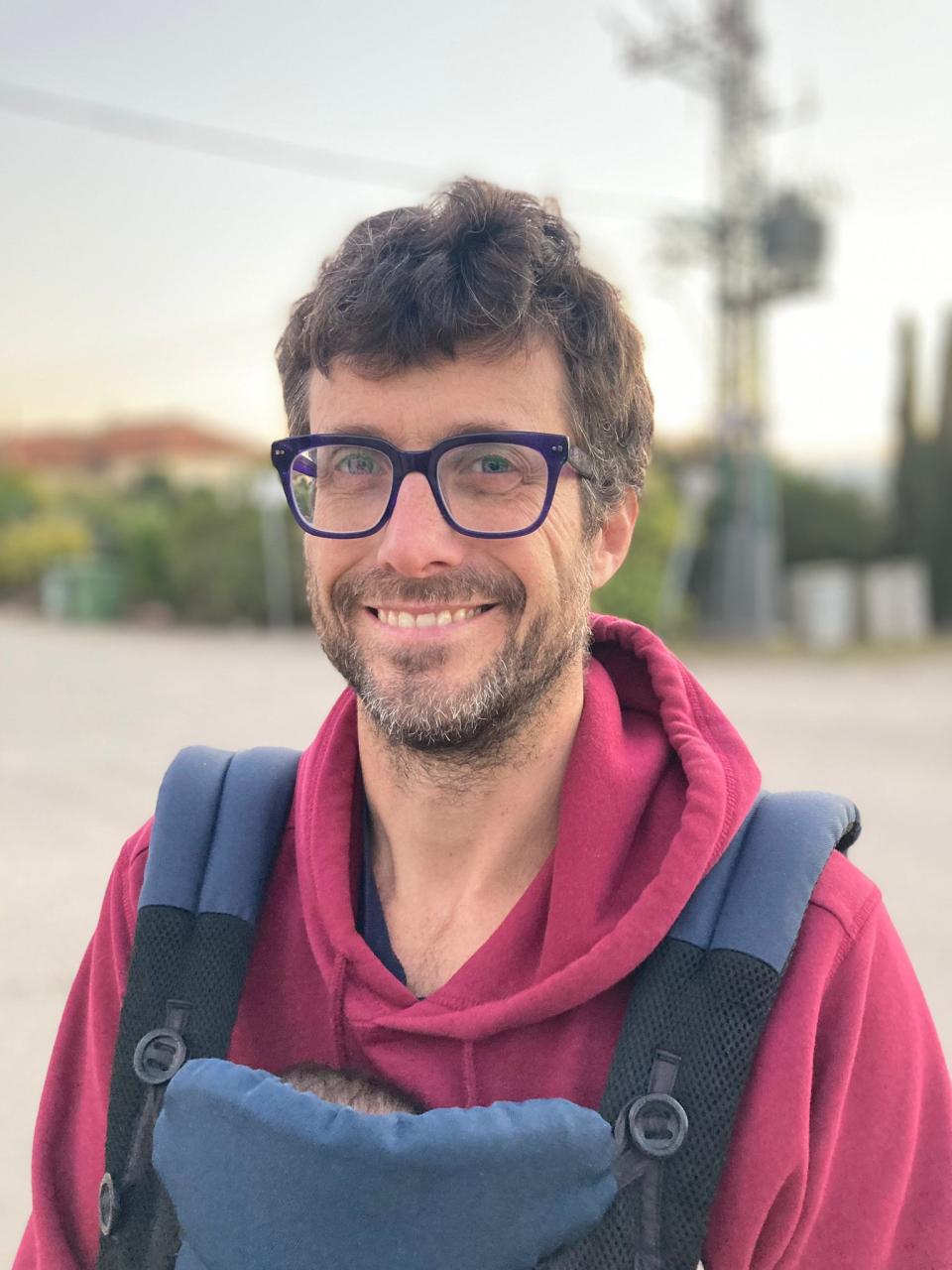Meet Our Researcher: Dr. Yair Daon
We would like to introduce you to Dr. Yair Daon who joined our academic faculty as principal researcher just a few months ago. 
Tell us a bit about yourself.
I was born and raised in Tel-Aviv, and started my academic journey at Tel-Aviv University. I studied math with biology, with the hope of becoming a veterinarian. Once I gave up on that idea, I proceeded to study at the Weizmann Institute of Science for an MSc. Then I moved to NYC to pursue a PhD in applied mathematics at New York University's Courant Institute of Mathematical Sciences. Then I spent six months in La Jolla, CA, where I worked at University of California San-Diego's Scripps Institution of Oceanography. Having zero knowledge of Oceanography, my goal was to learn from and work with George Sugihara - a world renowned mathematical ecologist. Then I moved back to Israel, and worked at a startup for two years. When I realized that the methods and questions I found fascinating in mathematical ecology were even more fascinating in the field of infectious disease epidemiology, I started a postdoc with Uri Obolski and Amit Huppert at Tel Aviv University. I was offered a position in Bar-Ilan University's Azrieli Faculty of Medicine, and immediately took it.
Outside of work, I enjoy folding clothes while people are still inside them (also known as Brazilian Jiu-Jitsu), playing the Banjo, and taking my beloved dog Carmella to play with fellow canines. Last but definitely not least, I enjoy and cherish every single moment I get to spend with my new baby girl and her amazing mother.
What is your main area of research? Tell us a bit about your lab.
I am fascinated by the complex dynamics of systems that involve infectious diseases, and its implications on curbing their spread. Sometimes I let the data speak for itself and sometimes I impose assumptions on the structure of the system. Sometimes I ask basic questions such as "how do I know what causes what?" At other times I aim to create immediately applicable tools, e.g. learning "where is the next pandemic likely to emanate from?"
For example, recently, my colleagues and I were able to answer a question that was puzzling epidemiologists for a while: how can we detect "causal" relations between the spread of pathogens, when these pathogens are synchronized to some environmental driver? For example - can we infer which strain of influenza elicits cross-immunization to which, even though their outbreaks are driven by the changing seasons? Our approach is model-agnostic and generic: we consider the systems' underlying deterministic skeletons and compare a measure of "complexity" for each. Then, we infer the true causal direction from a comparison: a cause will generically be less complex than its outcome.
During COVID, I gained interest in improving the cost and reliability of diagnostic tests through optimized pooling strategies. Currently I am in the process of a collaboration with Prof. Avi Peretz from Tzafon Medical Center, aiming to reduce costs and improve accuracy for sexually transmitted infections in under-privןleged populations.
What do you hope to contribute to the world of science/research?
My goal is to arm epidemiologists and practitioners with innovative tools to decode and mitigate the spread of infectious diseases.
Why did you choose the Azrieli Faculty of Medicine?
I was dying to live somewhere quiet. Everybody in the Faculty was super nice and I felt like I could have some really interesting collaborations.
What do you like about the North?
Everything! Having lived in concrete jungles such as TLV and NYC I've come to really appreciate the abundance of sunshine and nature around here.
Anything else?
If you are looking for a research opportunity, I have several fascinating projects for mathematically inclined students. Together with Prof. Michael Edelstein from our Faculty, we are recruiting a PhD student to study the interplay between pathogens and (mis-)information spread. Prof. Edo Birati from the Tzafon Medical Center and myself are also recruiting a PhD student to study cardiac arrhythmias as a "phase transition"; phase transitions are a qualitative change in the behavior of a system, similar to the transformation of ice to liquid water. I am also recruiting a PhD student to infer connectivity between regions based on data of influenza incidence; influenza is so widespread that it can give us valuable insight on how pathogens really spread between different strata of a population.



